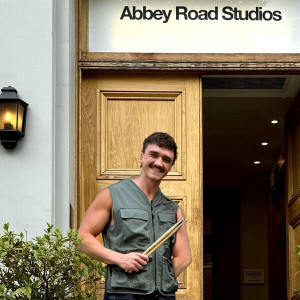When you think of drums, what comes to mind? Different drum types like the booming timpani in an orchestra? A rock drummer’s snare and toms? The rhythmic pulse of bongos, bodhráns, or talking drums? Drums are among the oldest instruments in human history, found in every culture, from ancient temples to modern stadiums. But who actually invented them and when?
Let’s trace the evolution of this powerful instrument through six major moments in drum history
~70,000 BC
Earliest Percussion Tools
Prehistoric humans use bones, sticks, and rasps for rhythm — the earliest known percussion instruments.
5500–2350 BC
First Animal-Skin Drums
Archaeological finds in China show drums made with crocodile skin — some of the earliest drums.
2700 BC
Drums in Ancient Egypt & Mesopotamia
Frame drums (timbrels) and tall standing drums appear in religious and ceremonial contexts.
13th Century
Kettle Drums Arrive in Europe
Nakers from the Middle East introduced tunable kettle drums to medieval European music.
1386 AD
Snare + Fife Combo in Switzerland
The pairing of snare drum and flute becomes a military staple — a forerunner to modern marching bands.
1909
First Kick Pedal Patented
Ludwig Drum Company patents a foot pedal for bass drums, revolutionizing the modern drum kit.
1960s–Today
Rise of Global Drumming Styles
African djembes, Latin congas, and digital drum pads become part of mainstream music across genres.

Prehistoric Percussion Instruments
The origins of drumming date back to prehistoric times, beginning with idiophones — objects that made sound when struck, scraped, or shaken.
Archaeologists have uncovered one of the oldest known percussion tools in modern-day Belgium, a rasp made from mammoth bone, dating back to around 70,000 BC. Other early idiophones likely included sticks knocked together, hollow logs, or clappers made from bones or wood.
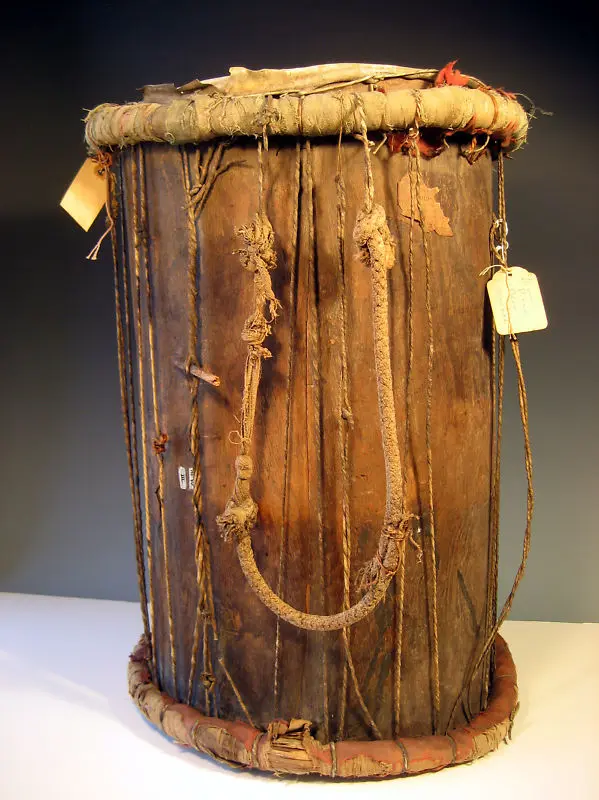
Over time, these primitive tools evolved, and so did humans’ understanding of sound.
Eventually, our ancestors discovered that hollow objects — like pots, gourds, or carved-out wood — could resonate more deeply, especially when covered with stretched animal skin. This crucial innovation laid the groundwork for the first true drums.
Though no single person can be credited with “inventing” the drum, it’s clear that percussion began as a universal human impulse to mark time, express emotion, and connect through rhythm. It’s one of the oldest and most fascinating drum facts in music history — proof that rhythm has always been part of human culture.
Neolithic Developments
The Neolithic period marked a turning point in the evolution of drums, as early societies began crafting more advanced instruments with stretched animal hides.
Some of the earliest physical evidence of actual drums comes from archaeological sites in Neolithic China, dating between 5500 and 2350 B.C. These ancient drums were made using alligator skins stretched over hollowed-out wooden frames — a significant leap from earlier idiophones.
Their design shows early knowledge of acoustics and ritual use. These finds mark some of the earliest known membranophones — true drums made with animal skin for resonance, much like the hand-played drums still used around the world today.
Ancient Chinese drums were used to command armies and ward off evil spirits, not just make music.

Bronze Age Innovations
When exploring when were drums invented, one major milestone is the emergence of the Dong Son drums around 3000 B.C. in northern Vietnam. These large bronze drums, created by the Dong Son culture, represent one of the earliest known examples of metal percussion instruments — combining function, artistry, and ceremony.
Cast using advanced lost-wax techniques, the Dong Son drums featured intricate decorations of daily life, animals, and warriors, showcasing the culture’s sophisticated craftsmanship.

Their presence across Southeast Asia — from Vietnam to Indonesia — points to an early form of musical and cultural exchange, reminding us that the invention of drums was not tied to one region but evolved through many parallel innovations.
Drums in Ancient Civilisations
Long before modern drum kits, drums were central to rituals, warfare, and storytelling—from Mesopotamian ceremonies to African village communication. By exploring how early societies used drums, we get a deeper understanding of their cultural power — and how the answer to "who invented the drums" is far more complex than a single name or moment in history.
Mesopotamia and Egypt
When exploring who invented the drums, two of the earliest known cultures to use drums in ceremonial and religious contexts were Mesopotamia and Egypt. Drums were already well established by 2700 BC, with archaeological records and depictions showing their widespread use.
In Mesopotamia, rectangular frame drums called timbrels appear in ancient artwork, while large standing drums are shown being used by priests in Sumerian reliefs from around 2000 BC.
The earliest recorded named drummer in history is Maram-Sin, a priestess from ancient Mesopotamia in 2280 BC.
In Ancient Egypt, drums were used in parades, dances, and spiritual ceremonies. Shoulder-slung cylindrical drums and tambourine-sized frame drums were especially popular. A double-headed drum found in the tomb of Djehuti-Baqt (c. 2000 BC) shows the range of drum types in use, supporting both military and ceremonial rhythms.
So if you're taking lessons with a drum teacher today, you can trace your instrument's lineage back thousands of years to these early cultural innovators.
Indian Subcontinent
The Indian subcontinent also has a deep drumming heritage. Ancient texts such as the Rig Veda mention instruments like the dundhubi, a war drum used to rally soldiers and communicate during battle. The dundhubi was typically a barrel-shaped drum with animal skin stretched across one or both ends. These instruments were not only tools of war but also important in religious rituals and public celebrations.

Drumming in India evolved alongside spiritual practices and classical music, giving rise to complex rhythms and new percussion instruments such as the mridangam and tabla.
This shows that, even thousands of years ago, drums were already a vital part of society's rhythm — spiritually, socially, and culturally.
So when wondering when was the drum invented, it’s clear India shaped its own drumming legacy — one you can still explore today through online drum lessons.
African Traditions
In our minds, African music is intrinsically linked to drums. While there are certainly other instruments in the music of the African continent, many ceremonies and celebrations are accompanied only by drumming.
One of the best-known drums is the djembe. The djembe is a West African drum carved from hardwood and topped with animal skin — usually goat for a sharper tone or cow for a warmer sound.

Believed to be 400–800 years old, it originated during the Mali Empire and was crafted by the Numu blacksmith caste.
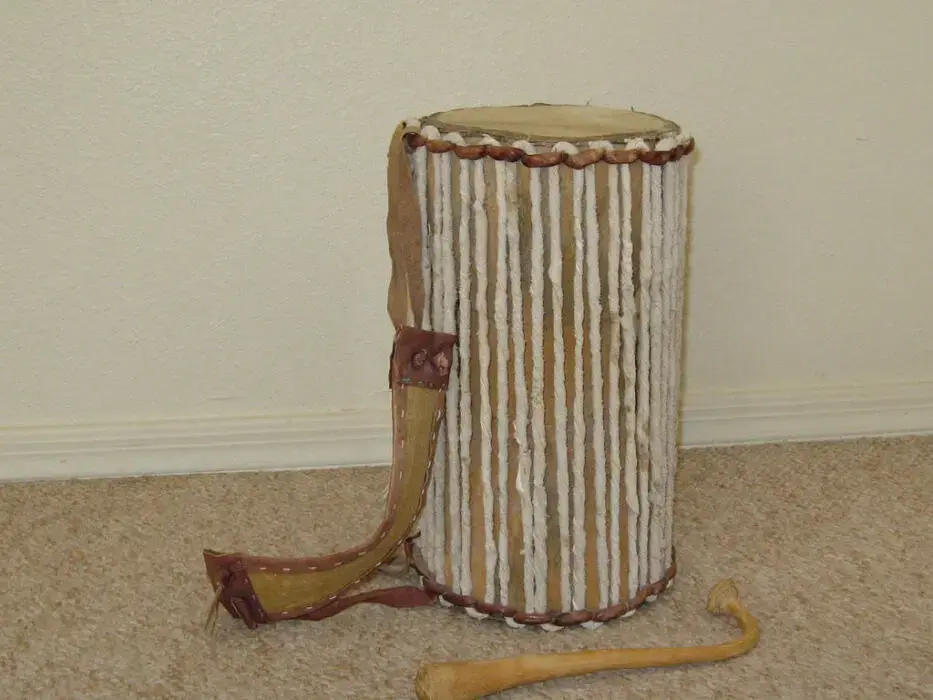
Originating in West Africa, the talking drum is an hourglass-shaped instrument used in countries like Senegal, Nigeria, and Ghana. Its leather tension cords let drummers vary pitch mid-beat by squeezing the drum under their arm, allowing it to imitate speech patterns and tones.
Traditionally played with a curved stick, the talking drum was a musical tool and a communication device, sending messages across villages through a learned "drum language" of phrases, stories, and poetry.
If you've ever thought to learn drums, African traditions offer some of the richest and most expressive styles to explore even for beginners. From celebration to communication, these instruments have always gone far beyond rhythm — they speak an entire language.
Medieval and Renaissance Developments
The medieval and Renaissance periods transformed drums from ritual tools to key instruments in music, theatre, and military settings, laying the foundation for many modern drum types and techniques.
Introduction to Europe
During the Middle Ages, drums began to appear more widely across Europe, likely introduced through contact with the Middle East during the Crusades. These cultural exchanges brought new instruments, rhythms, and playing techniques to the West, marking a turning point in European musical evolution.
Two key instruments from this period were the nakers and the tabor. Nakers were small paired kettle drums, often played in military or ceremonial settings. The tabor was a rope-tensioned snare drum played with one hand while the other hand played a flute, a duo that became common in military music and folk traditions.
This period marked the beginning of drums as both musical and signalling tools in Europe, laying the foundation for the percussion instruments found in orchestras and marching bands today.
Different Kinds of Drums
Kettle Drums
The ancestors of the modern orchestral timpani came from the Middle East. Probably a development of pot drums - skins stretch over a ceramic pot - they came over Europe as drum pairs called nakers in the 13th century.
Screws for tensioning appeared around the 16th century when kettle drums became a popular pairing for trumpets. In the 17th century, ever more elaborate pieces were written for them, and they became a staple of orchestral music.

Searching for drum lessons for beginners? Check Superprof now!
Snare Drums
Double-sided drums with snares first appeared in the Middle Ages. In 1909 the Ludwig Drum Company patented an improved version of a bass drum pedal. Early versions even included a pedal for a cymbal striker for hoop-mounted cymbals.
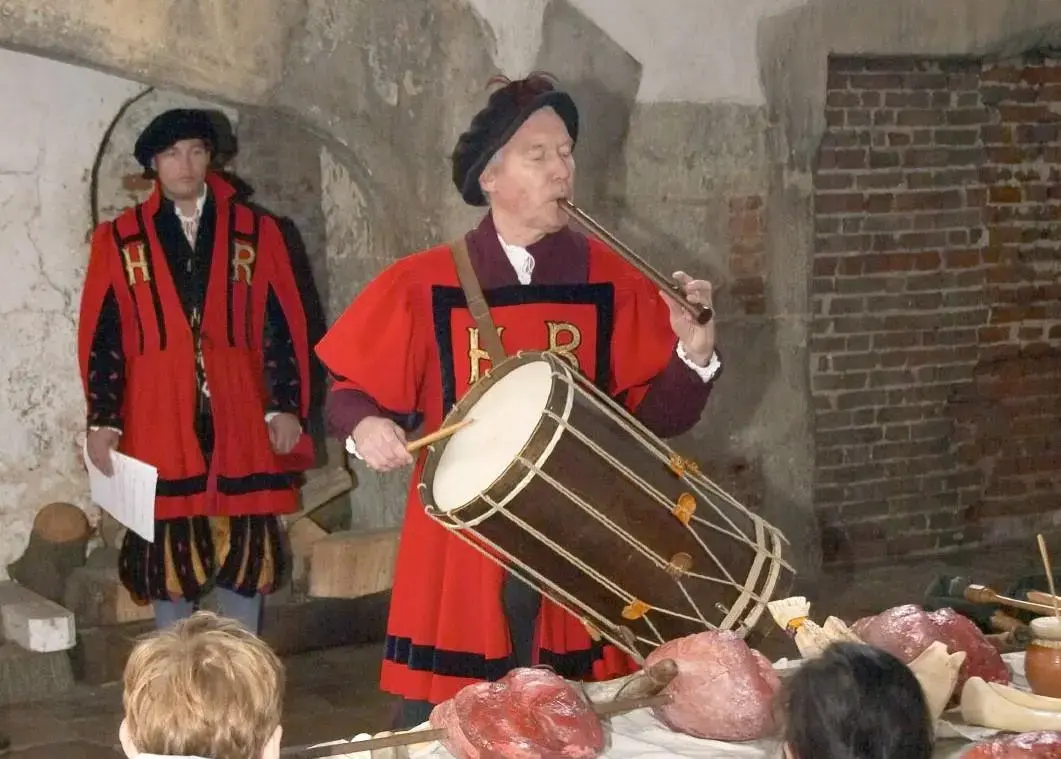
The tabor, a small shoulder drum played with one hand while the other played a flute, was popular in early military settings. By 1386 in Switzerland, the snare drum and fife combo became a marching staple.
The first documented use of this combination of snare drum and fife was in Switzerland in 1386. Over the course of the next centuries, they became a staple of military units. The drums, now larger and played with two drumsticks, gave the proper rhythm for marching while the fife gave the soldiers courage.
By the 18th century, snare drums entered music halls and orchestras. With jazz and Dixieland, they gained stands and became part of drum kits. Snares of gut or rope were replaced by metal snares; the shell could be of wood, synthetic materials or metal.
Today, there are many types of snare drums, including the piccolo, marching, pipe band, drum kit, and the Brazilian caixa malacacheta with top-mounted snares. Each offers unique tones and can be played with sticks or brushes for a varied sound.
Why not discover some of the world's most renowned drummers?
Bass Drums
The bass drum or kick drum originated in Turkey. Its precursor is the davul, a cylindrical drum with two drum heads, each head hit with two different sticks - one stick with no padding and one rod held very flat. It gave a deeper sound than most traditional drums. It was hung vertically from the neck so both drum heads could be sounded at the same time.
The davul, or tabl turki, dates back to at least the 14th century, with the earliest painting from 1502. Used in Turkish military and traditional music, it reached Europe during the Ottoman expansion in the 18th century and was soon adopted by composers like Mozart.
As it evolved, the bass drum became a classical staple — larger in size, played with padded mallets, and mounted on adjustable stands.
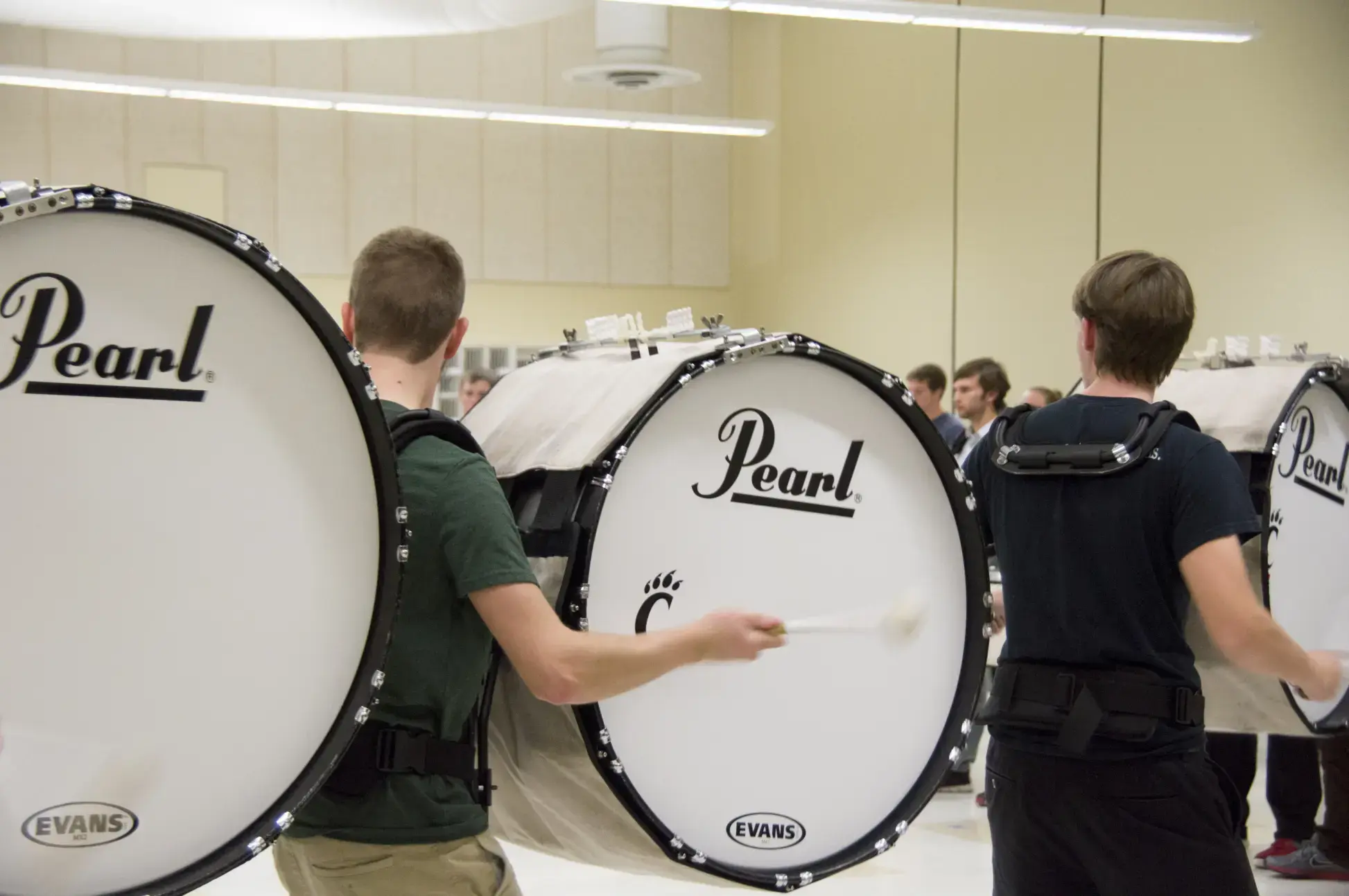
By the 1800s, orchestras embraced new drum styles — Berlioz’s Symphonie Fantastique (1830) featured the first drum roll, and gong drums with a single suspended head briefly rose in popularity. Screw tensioning soon replaced ropes for more precise tuning.
From prehistoric bone rasps to modern drum kits, the evolution of drums reflects thousands of years of human rhythm, ritual, and innovation. If you’ve ever wondered when was the drum kit invented, many trace its origins to the early 20th century innovations like the bass drum pedal, which made multi-piece kits possible.
While no one person invented the drum, nearly every culture has contributed to its development — shaping it for war, worship, communication, and music. Understanding when drums were invented means tracing a global timeline filled with creativity and purpose.
Today, even the most advanced drum set parts — from snares to kick pedals — owe their origins to these ancient beginnings. Whether you’re learning percussion basics or diving into drum lessons, every beat connects you to this rich, global legacy.











